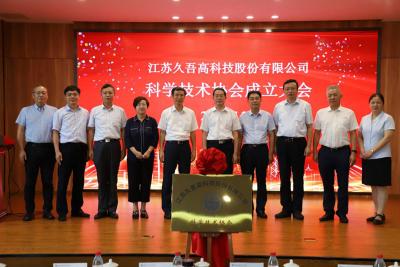In the traditional production process of biological fermentation broth, the purification and filtration of most fermentation broths still use filtration separation such as plate and frame filtration, vacuum drum, centrifugal separation, diatomite filtration and so on , or use electric precipitation method such as flocculation and sedimentation, heating, refrigeration, etc.Traditional technology can only coarsely separate large solid impurities in animal extracts.The liquid of semi-finished products or finished products may contain soluble bacteria, miscellaneous proteins, colloids and inorganic ions which can bring difficulties to later extraction and ion exchange, affect extraction efficiency and subsequent product quality, and even cause material liquid pollution, resulting in product scrap.
As a substance that largely exists in cereal proteins and animal brains, glutamic acid occupies an important position in the process of protein metabolism in organisms and participates in many important chemical reactions in animals, plants and microorganisms. Monosodium Glutamate contains a small amount of glutamic acid. China produces more than 500,000 tons of monosodium glutamate per year. However, in the traditional extraction process of monosodium glutamate, the yield of glutamic acid is low and the amount of waste-water is large due to the isoelectric separation method with bacteria. Generally, there are centrifugal method and membrane method for sterilization. Centrifugal method has not been widely used due to the shortcomings of low sterilization rate and high operation intensity. While organic membrane sterilization has the disadvantages of low flux and low concentration.
At present, China mostly adopts fermentation method to produce MSG. In the fermentation method, isoelectric method is used to extract glutamic acid (a-aminopentanine) in the fermentation broth.
The diameter of the bacteria in the glutamic acid fermentation broth is about 0.7-3 microns, which is very hydrophilic, and it is very difficult to separate the bacteria. At present, MSG factories basically adopt isoelectric extraction without sterilization. The yield of glutamic acid produced by this method is 91.6%. Every ton of MSG produced will result in 1.14 tons of waste CODcr, which leads to large amount of waste water with about 60% high protein content of the bacteria in the waste liquid . If it is not recycled, it is a great waste. Due to the high protein content, the biological method is unable to achieve discharge standards, which causes great damage to the environment. The use of ceramic membrane machine to sterilize glutamic acid fermentation broth can not only recover protein, but also significantly reduce the amount of washing water in the dissociation process and increase the yield of glutamic acid.

Figure 1: Ceramic membrane equipment for producing MSG
Technical advantages of jiuwu ceramic membranes separation:
It is carried out at room temperature, with mild conditions and no component damage, especially suitable for heat-sensitive materials;
Pure physical filtration, no phase change, qualitative change, and no damage to active ingredients;
High filtration precision and uniform pore size distribution, which can realize the purification and concentration of the effective components of the fermentation broth;
Simple operating system with short process, which is easy to clean and maintain;
After the fermentation broth is concentrated by the filter membrane, it is not only small in size, fast in column loading, and low in resin consumption, but also can recover mycelium at the same time, improving production efficiency and the service life and regeneration cycle of resin;
The system is designed for cross-flow operation, no need to add filter aids, no introduced new impurities, and the problem of pollution and blockage will be solved;
Modular design of the system, with the filter material easy to replace. Online regeneration cleaning and sewage devices designed to reduce labor intensity and production costs, and improve production efficiency;
The selected 304 or 316L stainless steel sanitary materials meet the QS quality standard;
The system is automatically controlled by PLC, with low labor intensity, and the membrane filtration process is carried out in a closed container to achieve clean production;
Due to the thermal stability, chemical stability, mechanical stability and good separation performance of ceramic membranes, it has a good application prospect in the fermentation industry. The main directions of promotion and application are as follows:
To separate castor body in fermentation broth, production of feed or other items by concentration of bacteria, and extraction process of clear liquid;
To remove metabolic wastes in the fermentation broth and increase the yield or the conversion rate of raw materials;
To extract concentrated fermentation products, concentrate the hyphae in the fermentation broth or utilize a small pore membrane to concentrate the target product;
To treat high-concentration organic fermentation waste-water, reduce CODcr in the waste-water, and recover the effective components in the waste-water.




 +86-25-58849045
+86-25-58849045
 +86-25-58749295
+86-25-58749295
 jiuwu@jiuwu.com
jiuwu@jiuwu.com
 No. 9 Park Road, Pukou District, Nanjing City (Sanqiao Factory)
No. 9 Park Road, Pukou District, Nanjing City (Sanqiao Factory) Call us on:
Call us on:  Email Us:
Email Us:  No. 9 Park Road, Pukou District, Nanjing City (Sanqiao Factory)
No. 9 Park Road, Pukou District, Nanjing City (Sanqiao Factory)

 English
English 한국어
한국어 français
français русский
русский Español
Español

